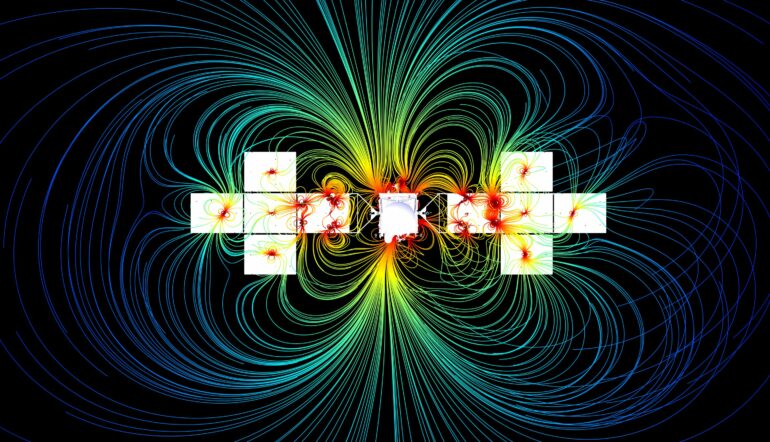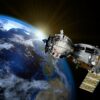Magnetic fields are everywhere in our solar system. They originate from the sun, planets, and moons, and are carried throughout interplanetary space by solar wind. This is precisely why magnetometers—devices used to measure magnetic fields—are flown on almost all missions in space to benefit the Earth, planetary, and heliophysics science communities, and ultimately enrich knowledge for all humankind.
These instruments can remotely probe the interior of a planetary body to provide insight into its internal composition, structure, dynamics, and even evolution based on the magnetic history frozen into the body’s crustal rock layers.
Magnetometers can even discover hidden oceans within our solar system and help determine their salinity, thereby providing insight into the potential habitability of these icy worlds.
Fluxgates are the most widely used magnetometers for missions in space due to their proven performance and simplicity. However, the conventional size, weight, and power (SWaP) of fluxgate instruments can restrict them from being used on small platforms like CubeSats and sometimes limit the number of sensors that can be used on a spacecraft for inter-sensor calibration, redundancy, and spacecraft magnetic field removal.
Traditionally, a long boom is used to distance the fluxgate magnetometers from the contaminate magnetic field generated by the spacecraft, itself, and at least two sensors are used to characterize the falloff of this field contribution so it can be removed from the measurements. Fluxgates also do not provide an absolute measurement, meaning that they need to be routinely calibrated in space through spacecraft rolls, which can be time and resource intensive.
A team at NASA’s Jet Propulsion Laboratory in Southern California has partnered with NASA’s Glenn Research Center in Cleveland, Ohio to prototype a new magnetometer called the silicon carbide (SiC) magnetometer, or SiCMag, that could change the way magnetic fields are measured in space.
SiCMag uses a solid-state sensor made of a silicon carbide (SiC) semiconductor. Inside the SiC sensor are quantum centers—intentionally introduced defects or irregularities at an atomic scale—that give rise to a magnetoresistance signal that can be detected by monitoring changes in the sensor’s electrical current, which indicate changes in the strength and direction of the external magnetic field.
This new technology has the potential to be incredibly sensitive, and due to its large bandgap (i.e., the energy required to free an electron from its bound state so it can participate in electrical conduction), is capable of operating in the wide range of temperature extremes and harsh radiation environments commonly encountered in space.
Team member David Spry of NASA Glenn indicates, “Not only is the SiC material great for magnetic field sensing, but here at NASA Glenn we’re further developing robust SiC electronics that operate in hot environments far beyond the upper temperature limitations of silicon electronics. These SiC-based technologies will someday enable long-duration robotic scientific exploration of the 460°C Venus surface.”
SiCMag is also very small— the sensor area is only 0.1 x 0.1 mm and the compensation coils are smaller than a penny. Consequently, dozens of SiCMag sensors can easily be incorporated on a spacecraft to better remove the complex contaminate magnetic field generated by the spacecraft, reducing the need for a long boom to distance the sensors from the spacecraft, as implemented on most spacecraft, including Psyche (see figure below).



